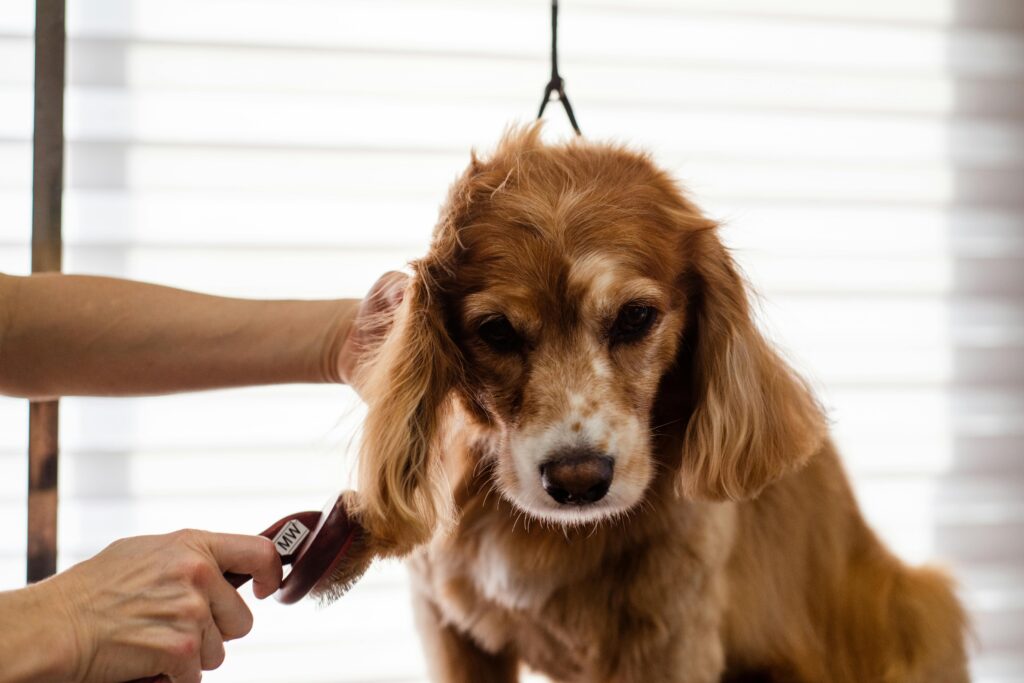
Keeping your puppy’s coat clean and healthy is an essential part of their overall well-being. Regular grooming not only improves their appearance but also helps prevent skin issues, shedding problems, and discomfort. With Texas’ warm climate and outdoor lifestyle, puppies can quickly get dirty, making consistent grooming a necessity. By following these Texas puppy grooming tips, you can keep your furry friend looking and feeling their best.
Understanding Your Puppy’s Coat Type
Before establishing a grooming routine, it’s important to understand your puppy’s coat type. Different breeds have different grooming needs, and what works for one puppy may not be suitable for another.
- Short-haired breeds like Beagles and Boxers require minimal brushing but still benefit from occasional baths and coat maintenance.
- Long-haired breeds such as Golden Retrievers and Shih Tzus need frequent brushing to prevent tangles and matting.
- Curly-coated breeds like Poodles require regular trimming and brushing to maintain their unique coat texture.
- Double-coated breeds such as Huskies and Australian Shepherds shed seasonally and need extra brushing during peak shedding times.
Understanding your puppy’s coat type will help you choose the right grooming tools and techniques for their specific needs.
Brushing for a Healthy Coat
Regular brushing is one of the most effective ways to maintain a puppy’s coat. It removes dirt, loose hair, and tangles while distributing natural oils that keep the coat shiny and healthy.
- Use the right brush – Choose a brush designed for your puppy’s coat type. Slicker brushes work well for long-haired dogs, while bristle brushes are ideal for short-haired breeds.
- Brush frequently – Puppies with long or thick coats should be brushed daily to prevent matting, while short-haired puppies can be brushed a few times a week.
- Be gentle – Brushing should be a pleasant experience. Start slow, use gentle strokes, and reward your puppy with treats to create a positive association with grooming.
Brushing also helps reduce shedding, which is especially useful in Texas where loose fur can quickly accumulate in the home.
Bathing Your Puppy
While puppies don’t need frequent baths, regular washing helps remove dirt, allergens, and odors. In Texas, where outdoor play is common, puppies may need baths more often than those in cooler climates.
- Use puppy-friendly shampoo – Avoid human shampoos, as they can dry out your puppy’s skin. Look for gentle, hypoallergenic shampoos designed for puppies.
- Bathe as needed – Most puppies only need a bath once a month unless they get particularly dirty or smelly. Overbathing can strip natural oils and cause dry skin.
- Dry thoroughly – After a bath, dry your puppy completely, especially in cooler weather. For long-haired breeds, use a pet-safe blow dryer on a low setting.
Nail Trimming and Paw Care
Keeping your puppy’s nails trimmed is essential for their comfort and mobility. Long nails can cause discomfort when walking and may even lead to joint problems.
- Trim nails regularly – Check your puppy’s nails every two to three weeks and trim as needed. If you hear their nails clicking on the floor, it’s time for a trim.
- Use a safe nail clipper – Choose a clipper designed for puppies or use a nail grinder for a smooth finish.
- Check the paw pads – Inspect your puppy’s paws for debris, cuts, or dryness. In hot Texas weather, pavement can be harsh on paw pads, so consider using a pet-safe paw balm for protection.
Ear Cleaning and Dental Care
Proper ear and dental care are often overlooked but are vital for a puppy’s overall health.
- Clean ears carefully – Some breeds are prone to ear infections, especially those with floppy ears. Use a vet-approved ear cleaner and a soft cloth to wipe away dirt and wax buildup.
- Brush teeth regularly – Start brushing your puppy’s teeth early to prevent plaque buildup and bad breath. Use a dog-specific toothbrush and toothpaste for best results.
- Check for signs of infection – If your puppy frequently scratches their ears, shakes their head, or has bad breath, consult your vet to rule out infections or dental issues.
Managing Shedding in Texas’ Climate
Texas puppies experience seasonal shedding, especially during temperature changes. Shedding can be managed with the right grooming routine.
- Increase brushing during shedding season – Spring and fall are peak shedding times for double-coated breeds, so brushing daily can help manage loose fur.
- Provide proper nutrition – A healthy diet rich in omega-3 fatty acids supports skin and coat health, reducing excessive shedding.
- Keep your puppy hydrated – Dry skin can lead to excessive shedding, so always provide fresh water to keep your puppy’s skin and coat in top condition.
Professional Grooming vs. At-Home Care
While regular at-home grooming is essential, some puppies benefit from professional grooming sessions.
- Schedule professional grooming – Long-haired or high-maintenance breeds may need a professional groomer every 4-6 weeks for haircuts and deep cleaning.
- Ask for breed-specific care – A professional groomer can recommend the best cut and care routine for your puppy’s coat type.
- Maintain between visits – Even if your puppy sees a groomer, daily brushing and routine nail trims help maintain their coat and overall hygiene.
Conclusion
Keeping your puppy’s coat clean and healthy requires consistent care, the right tools, and attention to their specific needs. By following these Texas puppy grooming tips, you can ensure that your puppy looks and feels their best while preventing common skin and coat problems. Whether it’s regular brushing, proper bathing, or maintaining nail and ear health, a well-groomed puppy is a happy and healthy one. Establishing a grooming routine early will help your puppy get comfortable with the process and make it an enjoyable bonding experience for both of you. Petsdogpuppy
